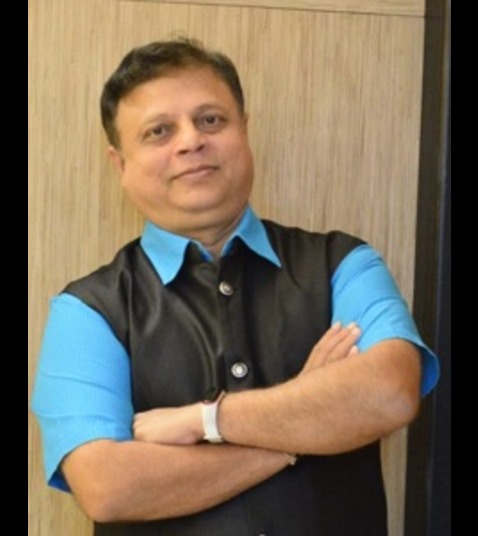Harmonica: My musical odyssey

My association with harmonica started when I was 12 years old. My father had a German make black coloured harmonica which he used to play. I always wondered how this
instrument was played, and one fine day, I took it out and started playing. I did not know how to play it. The famous harmonica tune of the song – 'Hai Apna Dil to Awara' from the film Solva Saal inspired me. Playing this song wasn't easy for me, and I ended up with only a few blows and draws. The harmonica was put back in the cupboard soon. I kept on trying and slowly could make it – though it was very basic and imperfect. The real journey began when I got an opportunity to attend one of the exclusive harmonica programmes at Bharat Natya Mandir in Pune. The playing of Shri. Nandu Belvalkar greatly influenced me. This was an
ideal chance for me to learn the better way.
Let's talk about the origin of harmonica. An instrument called ‘sheng’ was first invented in China a few thousand years ago. This was harmonica in its primitive form. The instrument had bamboo reeds, and became a prominent instrument in Asian traditional music. The sheng was introduced to Europe in the late 18 th century and soon became popular. Harmonica, in its present form, was first made by Christian Friedrich Ludwig Buschmann in
Berlin in the 18 th century.
In terms of size, the harmonica is the smallest free-reed-and-wind instrument. We know this instrument as baja in Marathi from our childhood. We often bought it at jatras (fairs) in villages. Most of us think this is the simplest instrument to play. However, it is an instrument that can be misplayed easily. This is exactly what happened to me. Soon I started my lessons with Shri. Nandu Belvalkar, one of the renowned maestros in Pune. I learned that playing the harmonica required a certain technique. Harmonica is the only wind instrument that uses both the blow and draw technique, unlike other wind instruments, which use only the blow technique.
Harmonica constitutes parts as shown in the schematic diagram below. The cover plates of the harmonica are usually made of stainless steel material to protect it from corrosion with either a wood or plastic chamber. The cost of a harmonica depends on various aspects, such as its make (usually Seydel, M. Hohner, Suzuki, Swan etc.) and its type. They are available in different scales (major scale, blues scale, minor scale etc.) with different keys – Ab, A, Bb, B, C, Db, D, Eb, E, F, F#, G etc. A few makes also offer custom tuned keys in the above scales.
There are mainly two types of harmonica – diatonic and chromatic. Diatonic harmonicas are designed to play in a single key though the standard Richter-tuned diatonic harmonica can play other keys by forcing its reeds to play tones that are not part of its basic scale. The tremolo harmonica is a type of diatonic harmonica having two reeds per note. In a tremolo harmonica, the two reeds are tuned slightly off a reference pitch – one slightly sharp and the other slightly flat. The chromatic harmonica is typically used in jazz, classical, pop, and in music where the melodies require more than a seven-note major or minor scales (like on a standard diatonic harmonica). It is a type of harmonica that uses a button-activated sliding bar to direct air from the hole in the mouthpiece to the desired reed plate. When the button is not pressed, the harmonica will play a diatonic major scale, whereas if it is depressed, the same scale will be played a semitone higher in each hole. Thus, the instrument is capable of playing all the 12 notes of a chromatic scale barring shrutis in Indian classical music. The chromatic harmonica can thus be contrasted with a standard harmonica, which can play only the notes in a given musical scale.
My guru, Shri. Nandu Belvalkar often says, “When a song is being played on an instrument, we are replacing the singer singing the song. We must honour him/her by playing melodiously”. Despite the fact that playing the harmonica seems simple, to be an expert and to have good tone quality, it is essential to maintain proper air pressure during blow and draw, hold your breath, locate the appropriate slot on the harmonica, seal your lips properly, move your lips and the harmonica, and use the slider to achieve the desired effect of vamping note bending etc. These are some of the technical attributes, and coordination of all of them while playing the instrument is a skill that needs to be developed. I am still trying to develop these skills.
Playing the harmonica is very similar to doing pranayamas – it uses the blow and draw technique. My personal experience is that playing the harmonica improves breathing and increases lung capacity.
Generally, harmonicas do not require any maintenance. It can be cleaned by just wiping it off with the help of a cloth or water. In a few cases, it needs to be tuned in order to restore its original scale. However, blowing too harshly can damage its reeds and require replacement. The purpose of this article is to share my personal experience with the harmonica, which has helped me to reduce my stress and anxiety levels, depression, and is helping me to live a peaceful life. But to tell you the secret, and if you take my advice – do not bother much about the historical and technical information given above. Get a harmonica and start playing the most melodious instrument!
Keep harping!
Parag Atre
TBWES



